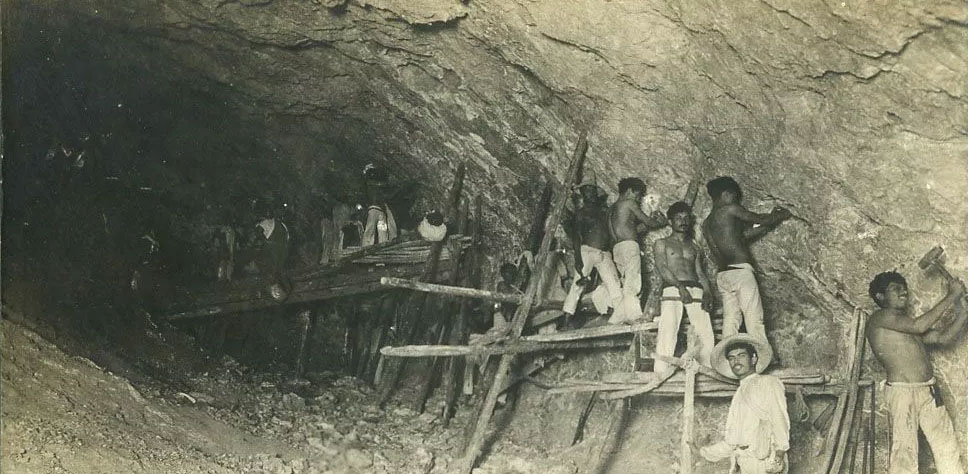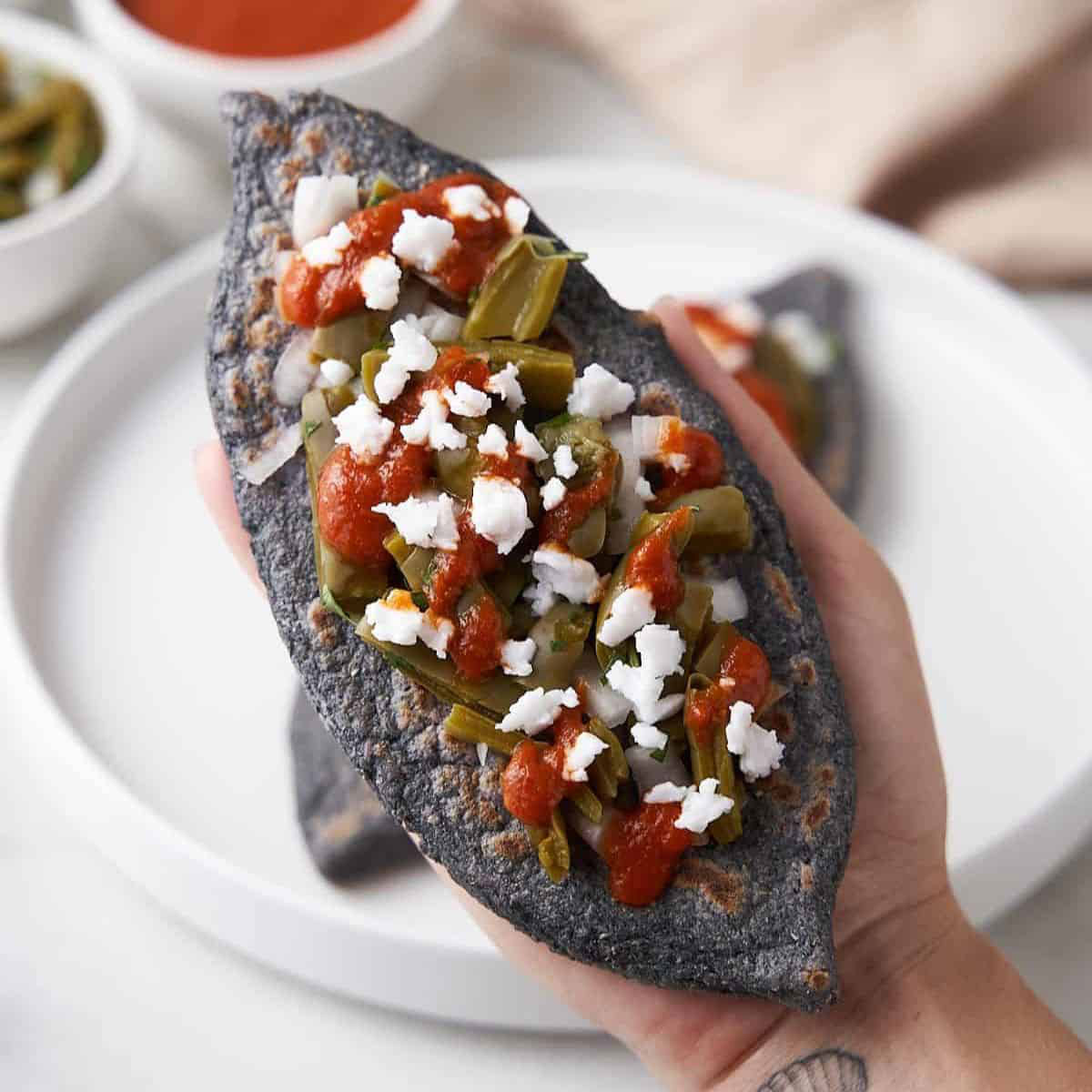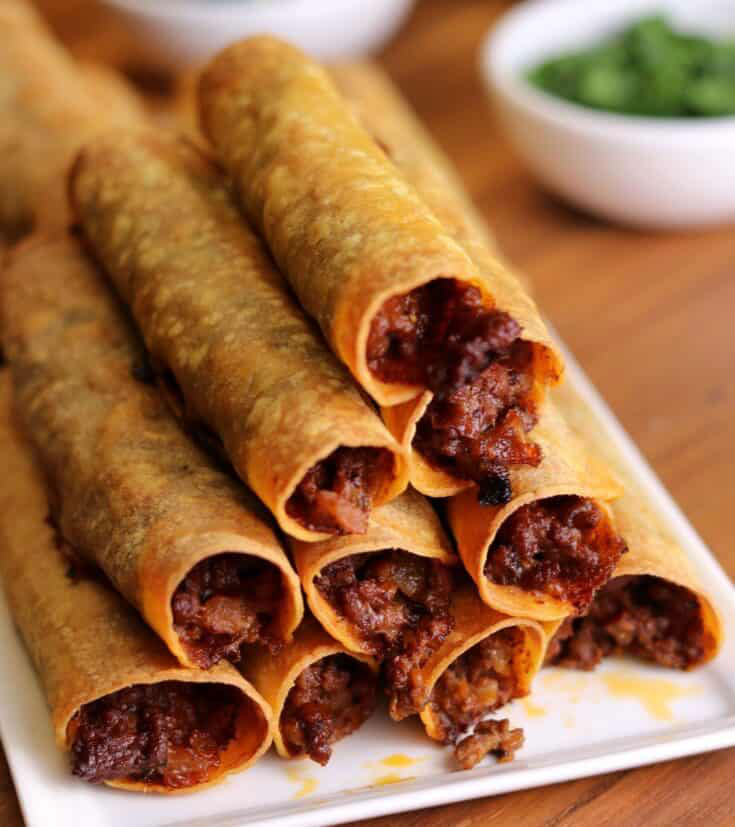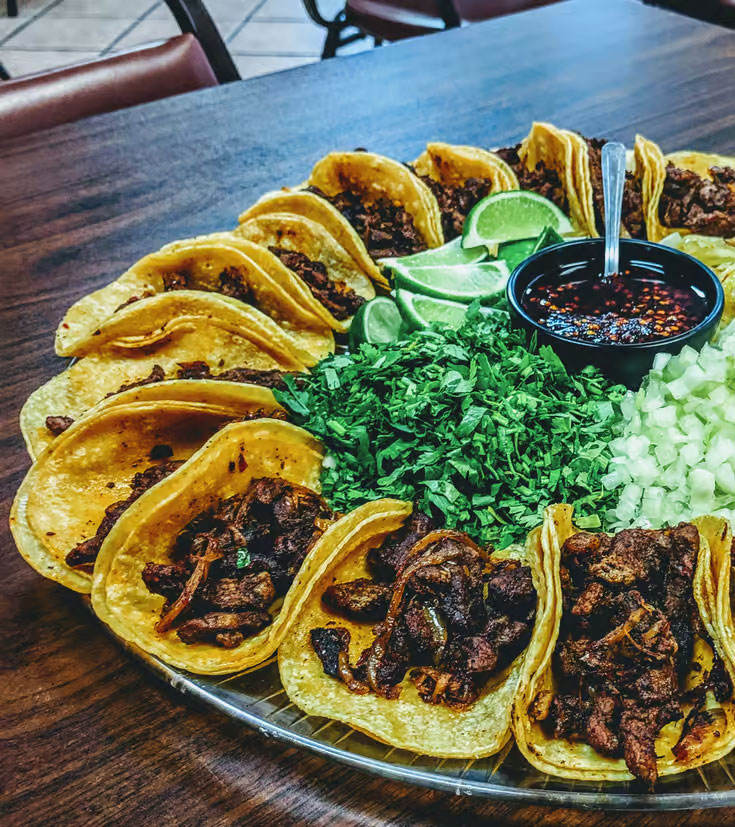


Tacos! Everyone loves them. That's a straight fact. We can argue for days over what actually belongs in a taco, but no matter who you are, there's one for you...vegan tacos, vegetarian tacos, gluten-free tacos (which would really just be a corn tortilla taco) and tacos for people who eat anything and everything. The taco is a simple concept: a tortilla of some kind with things inside it. We all know what it is, and it's a staple of handy meals, from breakfast to lunch, dinner, and even dessert (Choco Taco!) There's no wrong time to eat a taco—or six. However, where did they come from, and when? Well, since it's May (which is officially taco month*) and this is the time wherein the most tacos are consumed**, we're going to explore this. Let's tac-go!
If you asked most people where tacos are from, they'd say Mexico. They would be right. It seems, according to my research, that they indeed originated in Mexico hundreds of years ago. The form factor, however, has changed a bit over time before becoming the familiar tasty food we know today.

In the 18th century, there were many silver mines in Mexico, along with many miners. These miners needed something that was easy to eat and quick to prepare, as they were working hard. Thus, the taco was born. Why is it called a taco, though? Well, there is much speculation and no direct way to link things to the past. They just made tacos and ate them. The prevailing theory is that the miners would use rounds of gunpowder to blast rock, and they were wrapped in little rolls called "taquitos," which I understand means "dowel" or "cylinder" in Old Spanish. An alternate hypothesis suggests that it comes from the native Nahuatl people and their word "tlacoyo," which allegedly describes a flatbread with tasty junk on it. However, the tlacoyo is speculated to have been more like a pizza, and most Mexicans at the time did not speak Nahuatl, so it is difficult to say if that has any bearing on the name.
Back in the days of the Mexican working class, the first tacos were rolled, not folded, like the tacos we know today. Rolled taquitos, of course, still exist and can be found everywhere. However, taquitos, and by extension, tacos, have their roots in blowing shit up. During those days, they were called "taco de minero"—miner's taco and most working-class Mexicans enjoyed them because they were cheap, easy to eat on the go, and tasty.
The more modern incarnation of the taco as a folded shell with filling came later, during the Industrial Revolution. Mexico City was the destination for all sorts of migrant workers from more pastoral regions, who were seeking work and money in the hustle and bustle of the big city.
Naturally, if you were moving your whole family, women came along, and they brought with them fancy cooking skills. Back in the day, the men labored in fields and mines, and the ladies cooked and maintained the household. So, what's a lady to do to help the family? Well, set up a stand making tacos.

With every state and region in Mexico having different flavors and tastes, the marketplace for food was a diverse environment for many types of tacos. Ladies would set up stands, each claiming that theirs (from wherever they were native) was the best. To me, that sounds incredibly awesome. I'll take one from each of them. The taqueria became an institution in Mexico City, spreading far and wide, as people could not get enough.

Tacos came to the United States only later, around the late 1800s to early 1900s. The first mention of a taco in American media was an article from a newspaper in 1905. Mexicans were increasingly coming to the USA to work in mines, on the railroads, and on farms. Naturally, when you have something you like, you bring it with you. Tacos were that thing. The prevalence of tacos in the American working class, regardless of national origin, took off. This is where the more modern incarnation of the taco shows up. Rolled tacos...they're still there, but the "dump stuff in a tortilla and fold it" method became the dominant technique. Californians and Texans embraced the taco, and the prevalence of taquerias in the USA took off, to the delight of Americans and Mexicans alike.
Fast-forward to the 1940s. Tacos began making it into cookbooks like Betty Crocker and Good Housekeeping, and so America began its conventional relationship with the taco. Later, in 1952, a man named Glen Bell had worked in a taco shop earlier in his life and decided that his current business selling burgers and hot dogs was stupid. He opened a new business: Taco Bell. He soon expanded, franchised, and sold Americans tacos like a maniac.
As many Americans were unfamiliar with Mexican food at the time, the farther north he expanded, the more confused people were. However, when they got their first taste of those tacos, they came back for more. Back in the 1960s, when Taco Bell was starting to expand, they even had pronunciation guides on the menu, "Taw-ko," to familiarize folks with how to say the names of these things, as people at the time were not accustomed to them.
The taco, as it exists in the USA, has come full circle. We saw Mexican tacos and Americanized them, and now we're like, "Naw, we want more authentic tacos," and now we lean towards street tacos and real Mexican places rather than joints like Taco Bell, which is really only good if you're drunk at 4 a.m. Sure, they still sell plenty of tacos, but in the end, the real deal is the way to go. If the owner's name is Paco, go get that taco.

If you've read my articles before, you know that most of the time, I have a list. This is the taco list.
• Americans alone eat 4.5 billion tacos a year.
• The biggest taco ever made weighed 1.654 pounds and was constructed, of course, in Mexico. I must wonder how many people it took to eat it.
• Soft shell tacos are the preference of 64% of Americans, and 36% would rather have hard shell tacos. (I personally prefer the double-decker, where you use refried beans to glue the soft shell over the hard shell to make sure that if it breaks, it ain't going anywhere.)
• In the USA, 72% of tacos are made and eaten at home, while 28% are eaten at restaurants.
• Taco Bell is the highest-volume taco seller in the USA, with a 32% share of the fast-food market. Better than Jack in the Box, though I love their tacos. Jack tacos are like watching "Plan 9 from Outer Space"—so bad, it's good.
• The city in the USA with the most taco places is San Antonio, Texas. Not really a big surprise, there.
• 37% of Americans would rather have ground beef as a taco filler and 30% for shredded chicken. The remainder is a mix of pork, shrimp, shredded beef, fish, or tongue, in smaller stats.
There you have it: a succinct history of the taco, our beloved Tuesday meal and cultural institution. Tacos have both returned to their roots and gone crazy with those fusion cuisine people putting Chinese food in a taco and whatnot. That said, a taco is but a canvas upon which one can paint deliciousness however they see fit.
Enjoy life, and go get a taco—or ten.
-Wombstretcha
PS – My favorite is birria tacos. Fight me if you disagree, and try ‘em if you haven’t.
* This is true.
** Pulled that one straight outta my ass, as I couldn't get good data, but it would seem likely.
Wombstretcha the Magnificent is a taco advocate, hot sauce enthusiast, honorary Mexican, writer, and retired rapper from Portland, OR. He can be found at his website, Wombstretcha.com, on X as @wombstretcha503, and on MeWe and (begrudgingly) Facebook as "Wombstretcha the Magnificent," which is his legal name.